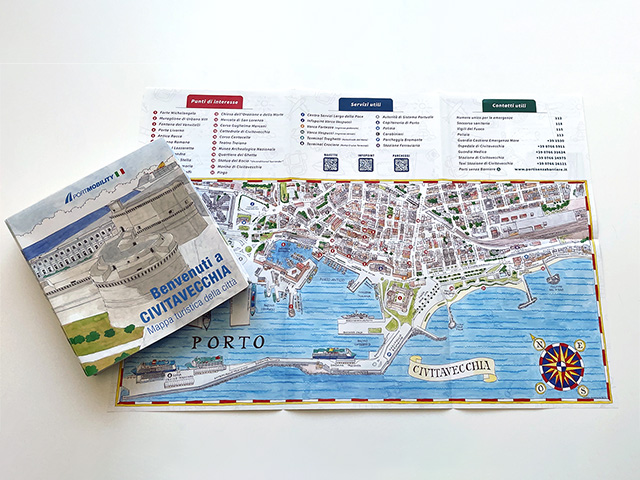The hidden Civitavecchia: 4 archeological treasures from the past
Thanks to the contribution of Dr. Francesca Pontani and Dr. Barbara De Paolis we take you on a discovery journey through 4 newly discovered archaeological treasures in Civitavecchia.Civitavecchia is a port city rich in history, which has benefited from continuous cultural exchanges. Like all of upper Lazio region, it was also the "home of the Etruscans", making it an area rich in archeological sites, which have recently been discovered and are now open to visitors.
Among these, there are 4 places that are especially worth exploring:
- Mattonara
- Valdaliga Tower
- Villa Pulcherrima
- the Etruscan Necropolis "Scaglia"
Let’s take a closer look at them, thanks to the precious contribution of Dr. Francesca Pontani and Dr. Barbara De Paolis.
1. MATTONARA
Mattonara is an important and unique archaeological area that unfortunately has been affected by marine erosion, environmental degradation and heavy human interference.
The archaeological site is open to visits. It is located between the northern area of the port of Civitavecchia and the Enel Torrevaldaliga North Power Plant.
Within the site there are archaeological finds of prehistoric and protohistoric age, materials of the first Iron Age, an Etruscan necropolis and even a seaside villa of the imperial age.
With the beginning of the Iron Age, as it happened in all of Etruria, people gradually started abandoning their villages in the mountain areas (in this case the Tolfa mountains) favouring new sites along the coastline. This is known as the abandonment of the Protovillanovian sites.
In the protohistoric age Mattonara was composed of a settlement, a necropolis and production areas related to the extraction of sea salt, an indispensable element at the time.
ETRUSCAN NECROPOLIS
While visiting this necropolis of the archaic Etruscan period (VII-VI century B.C.), you can admire burials dug in the natural rock layer with dromos (corridor) of access, a sepulchral room with double sloping ceiling, a central columen (beam) and a double burial bed.
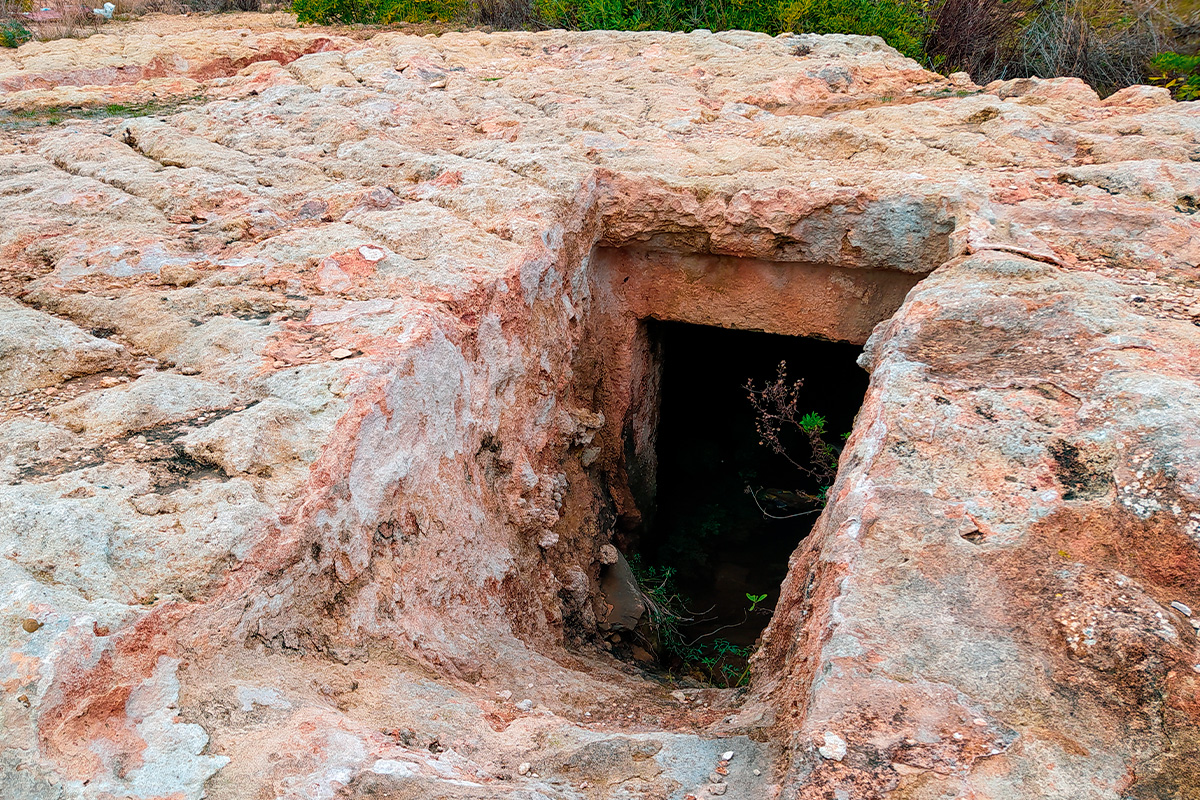
The Etruscan Necropolis near Mattonara - Civitavecchia
VILLA ROMANA
Initially the "Villa de La Mattonara" (I century BC - I century AD) occupied about 1 hectare of land. Today you can see only some parts of the walls in opus reticulatum and the fishponds, while the rest of this structure is buried under modern buildings.
NERO'S HOLE
Not far from Mattonara is the so-called "Buca di Nerone" (Nero’s hole). It is a circular pit dug in the stone with a diameter of 7.70 meters and a depth of 2.50 meters. It takes its name from a popular belief according to which the emperor Nero himself passed by this place.
In ancient times, the sea level was lower than today and the "Buca di Nerone" was therefore located on dry land, in what must have been one of the first settlements on this territory. This circular pit was most likely the bottom of a hut and it is now thought to have been the seat of a political-religious authority. It is one of the first examples of "public buildings" and place of power of the "lucumone" (the supreme magistrate of the Etruscan society).
Nero’s hole shows similiarities with the monumental huts of Luni sul Mignone and Monte Rovello, also dug in stone. This is proof of how this ancient architectural style persisted through time.
Edited by Francesca Pontani
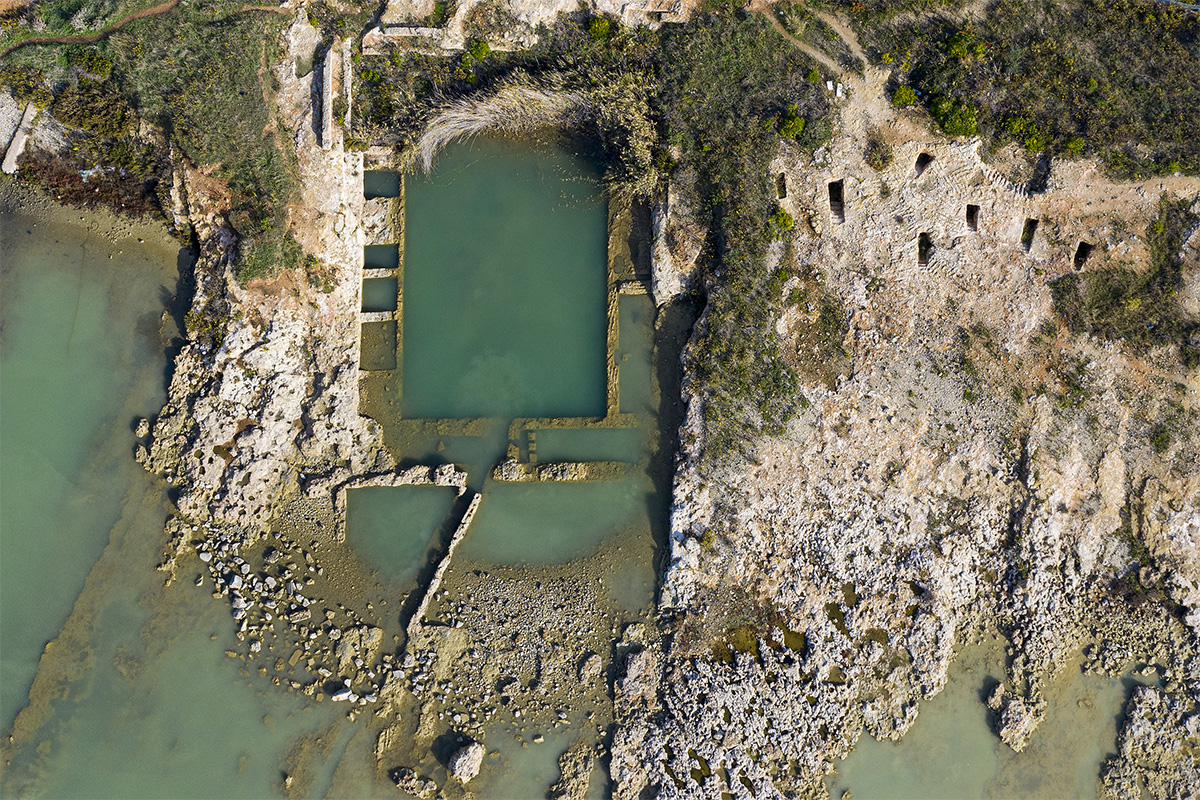
A bird's eye view of the archaeological area La Mattonara - Photo by Paolo Stefanini (Postcards from Civitavecchia 2020)
TORRE VALDALIGA. A seaside villa
In the age of Cicero a person undertaking a sea journey along the Tyrrhenian coast would have observed many luxurious seaside villas. These were "holiday places" of the Roman elite from the second century BC, built on promontories near bays and inlets. In the area of Santa Marinella and Civitavecchia there is a seaside villa every km or so, and the Aurelia road system runs parallel to the coast.
The seaside villas were very much in vogue in the late Republican and early Imperial period. They stand out in descriptions from literary sources as the symbol of opulent luxury and even as places for reprehensible behavior.
These villas were charachterized by panoramic views, and their architectural elements were intentionally aligned to frame the natural vistas. The nurseries were part of the elaborate architecture of the villa: their layout patterns offered one of the many views that could be enjoyed from terraces and triclinia. They were also luxuriously decorated, contributing to a relaxed atmosphere.
TORRE VALDALIGA
A typical example is the seaside villa with fishpond of Torre Valdaliga, which is located near the homonymous Enel power plant and can be visited.
Luckily, some peculiar technical features are preserved intact inside the villa. One of these are the long canals carved in the outcropping sandstone layer and arranged in a fan shape, in order to better capture the water needed to fill up the fishpond. These channels were oriented according to the direction of the winds, so as to exploit the wave motion to minimize stagnation inside the fishpond.
The connection between the living area and the fishpond was guaranteed by a pier. The owner could thus enjoy the seascape that he had built, while those who supervised the operation of the fishpond had a platform for a bird's eye view of the structure.
Due to the erosion of the coast, today it is possible to admire:
- part of the foundations of the building,
- part of the foundations of the building,
- the floors in opus tessellatum (mosaic) and opus signinum (broken pottery),
- parti di mura rifinite in opus reticulatum.
Edited by Francesca Pontani

A seaside villa: Torre Valdaliga
The Villa Pulcherrima
Today the site of Villa Pulcherrima, called Vigna de' Filippi (Filippi’s Vineyard), is a place of peace and beauty, despite being surrounded by houses, villas and the former War School.
The remains of Villa Pulcherrima are located in a private area, close to the Simulation and Validation Center of the Army, between via Terme di Traiano and viale Europa. Unfortunately, the area cannot be visited.
Having escaped from illegal construction works between the end of the '80s and the beginning of the '90s, the Villa lay forgotten until an appraisal carried out on behalf of the Court lastly established that it was a relevant archeological site.
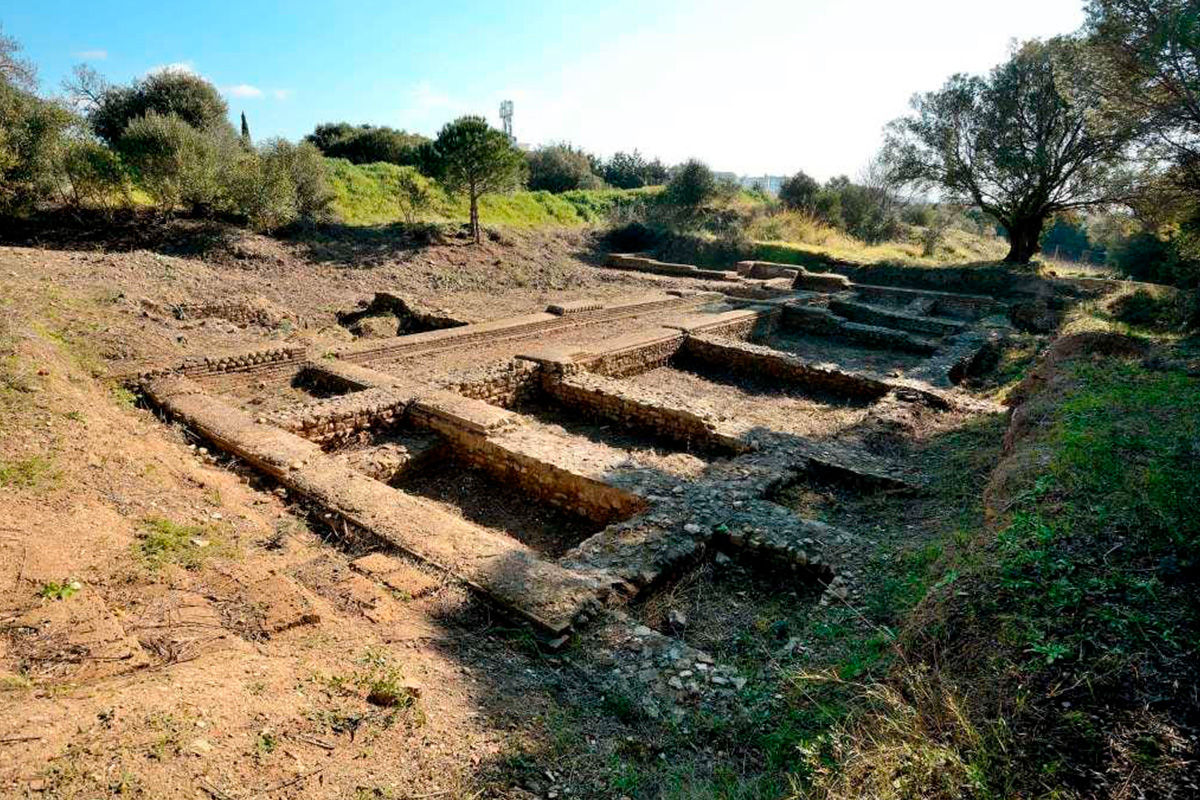
Remains of Villa Pulcherrima - Civitavecchia
The visible part is very little compared to what must have been. All that can be seen is: the foundations of some rooms, a room that could be a helicoidal thermal pool, a large exedra or more likely a laconicum (a circular vaulted room) perhaps with a large glass skylight. But most of the construction is waiting to see the light again, hidden by earth and shrubs.
Those rare findings which do surface are a hint of large walls, imposing mosaics, richly frescoed plaster, rare and precious marbles, as well as of a long history. The Villa, as matter of fact, kept on being used for a long time, as evidenced by the brick stamps that refer to restorations and renovations, in the Trajan era, Hadrian, Antonine and beyond, until the late empire.
Since 2019, the Roman Archaeological Group (Ulpia section) is taking care of it, implementing cleanups to avoid the degradation to which it seems destined because, although the superintendence has delimited the area since the 90s, the land is still private property.
The villa of Vigna de' Filippi is a unique place, a testimony of a glorious past and an investment for the future. It’s the Villa Pulcherrima that the great Emperor Trajan had chosen as his favorite dwelling.
Edited by Barbara De Paolis
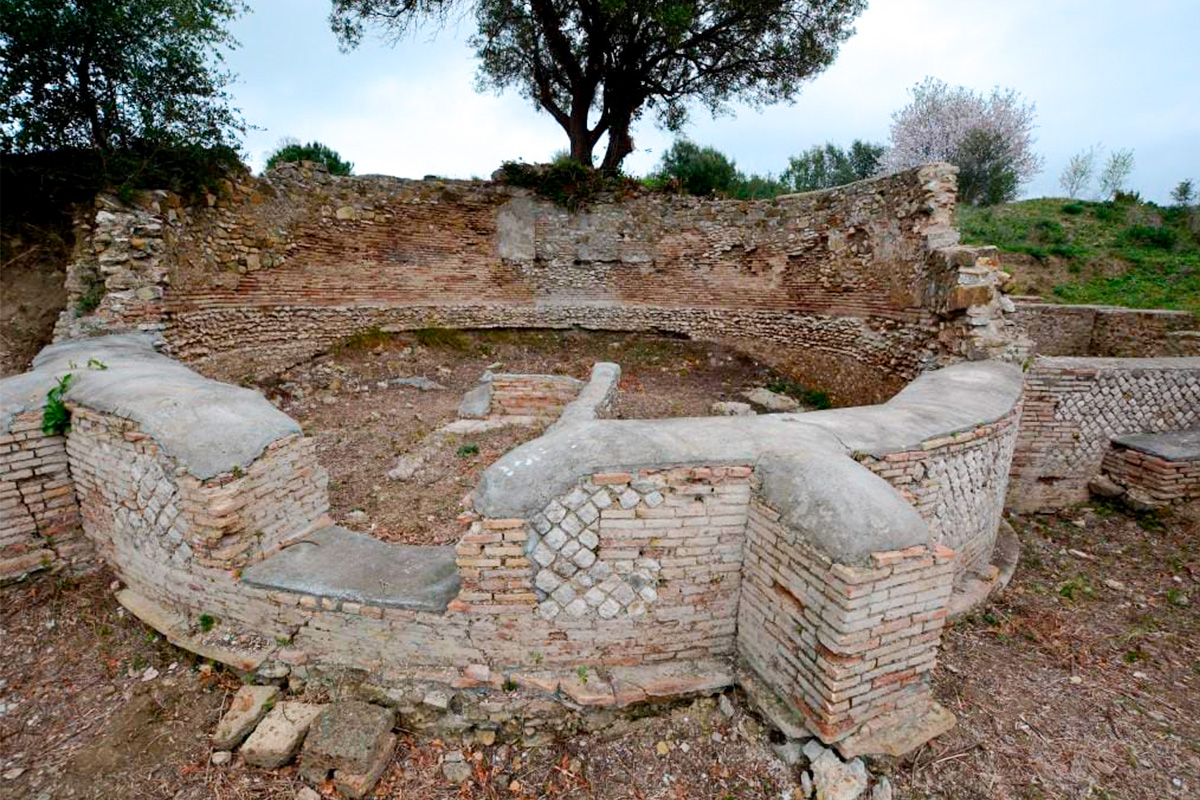
Remains of Villa Pulcherrima - Civitavecchia
The Etruscan Necropolis of Scaglia
Talking about the Necropolis of Scaglia is not easy, because there are no systematic studies or publications about it. Much of what we know is the result of a painstaking research in the archives (not yet complete) and of fieldwork.
This necropolis, located around the 77th km of the Aurelia road, has a considerable value as an archaeological testimony: the seventy and perhaps more tombs cover a period that presumably goes from the end of the 9th century B.C. to the whole of the 6th, with almost all the types of burials typical of the Villanovan and Etruscan cultures. Each burial tells a fascinating and, very often, enigmatic story.
To give some examples, you can see: the tomb of the medieval crucifix, perhaps a legacy of a Templar cult or a pitiful tribute of a mother to her child; the tomb of Bucci, with the engraved date 1829, the tomb of the burrow and that of the girl. All these works take the visitor to a distant world, while they document a long presence in the territory and therefore an important human settlement which is no longer traceable.
Since 2019, the Roman Archaeological Group - Ulpia section, commissioned by the Superintendence of Archaeology, Fine Arts and Landscape for the metropolitan area of Rome, the province of Viterbo and southern Etruria, is responsible for cleaning, mapping and making the site. It also organizes guided tours, educational excavations and concerts. (For more info: garnecropolilascaglia@gmail.com).
In the future, it is possible that the Necropolis of the Scaglia may become part of the city's heritage, recovering the dignity it deserves as a testimony of a rich past, articulated and still to be discovered and valued.
Edited by Barbara De Paolis

Bird's eye view of the Necropolis La Scaglia - Civitavecchia



 PORT MOBILITY CIVITAVECCHIA
PORT MOBILITY CIVITAVECCHIA













